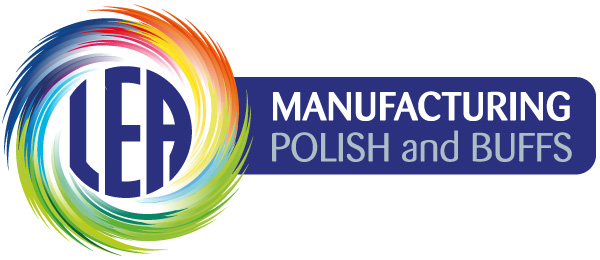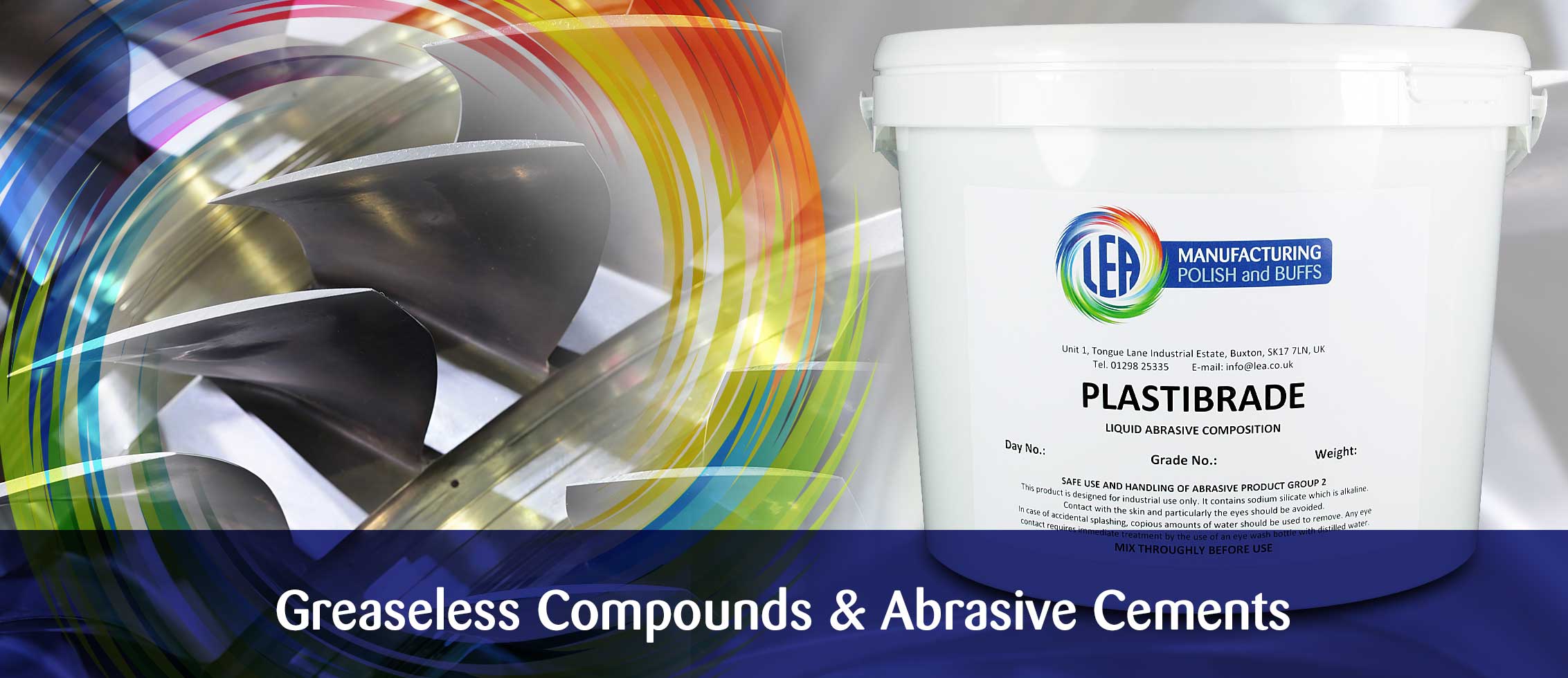Greaseless Bars
Greaseless bars such as Lea Compound are used to create a hard abrasive coating on a flexible mop allowing for a range of decorative finishes and flexible grinding and polishing.
It has many technical advantages from being much more economical than using coated abrasives or abrasive wheels to being more convenient and cleaner than cement and grit. This method leaves clean parts allowing much easier subsequent processes. Wheels can be used of various sizes and be shaped to allow ultimate access to a part.
When used with soft calico buffs high quality aluminium oxide and silicon carbide abrasives enable decorative satin finishes and butler finishes on profiles. The greaseless base which allows work to go straight into lacquering or other coating processes without the need for cleaning or degreasing.
It can also be used to remove material from high profiled items, such as grinding a profile, deburring or where surface defects have occurred in castings and stampings etc.
Use No.3 Glue for a stronger bind, particular on the grinding techniques.
Ferrous and non-ferrous metals can be worked and Lea Compound is also effective on wood and plastics wherever irregular shapes prevent the use of normal belt sanding.
Tubes are approx 10” (250mm) long and weigh approx 0.9 kg each. They are boxed in 20’s.
For best results work through 2 or 3 stages of coarse to fine, polishing at a different angle each time.
Lea Compound will provide high cost savings compared to other methods of flexible deburring and satin finishing since the buff can be reheaded whenever the coating wears out. Applying a new coating should be done at slow speed or with the motor turned off. A head will take a few minutes to harden before use. For extra aggression crack the surface with a hammer to produce more cutting edges.
In general speeds should be lower than with grease bar polishing.
For flexible polishing look to work around 5000 sf/m and for brushed effects 1500-2000 sf/m.
Always recover any exposed bar and keep away from heat during storage.
Below is a list of our available products - View Table >
Abrasive Liquids and Cements
For making scurfs with stitched mops or felt bobs. Plastibrade is a cement with an abrasive mix. It is a very cost effective method but more convenient than cement and grit. Producing a more rigid bond than greaseless bars, it can be used alone or for more aggression use it as a size for more abrasive grit.
Plastibrade Grey is hard and rigid for deburring applications. Plastibrade Red has some flexibility and should be used for satin finishing.
Plastibrade is available in 9 or 25 kg pails. Aluminium Oxide is the most common abrasive used for flexible polishing, where extra cut is needed Silicon Carbide is the abrasive.
Use by brushing the plastibrade onto the wheel and then rolling in grit. Allow to dry for 24 hours or speed up this process using some heat and air circulation.
Before the scurf is used, crack the surface with a hammer to produce more cutting edges.
Gritmaster and Grainlock are cements that will adhere abrasive to a buff to provide a scurf or set up wheel. Although a traditional method it is still the most cost effective way of achieving the hardness of a grinding wheel but with any size wheel or profile that may be most suitable to the part. Buffs used are generally stitched cotton or hard felts that can be profiled accordingly.
Gritmaster is available in a 10kg pail, CS, HD and GB in 6 ½ kg or 25 kg pail.
Use by brushing the cement onto the wheel and then rolling in grit. Allow to dry for 24 hours or speed up this process using some heat and air circulation.
Before the scurf is used, crack the surface with a hammer to produce more cutting edges.
All of the above products are available in the following grades - View Table >






